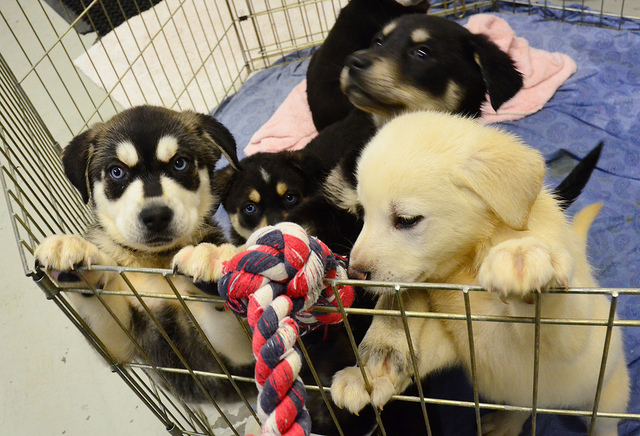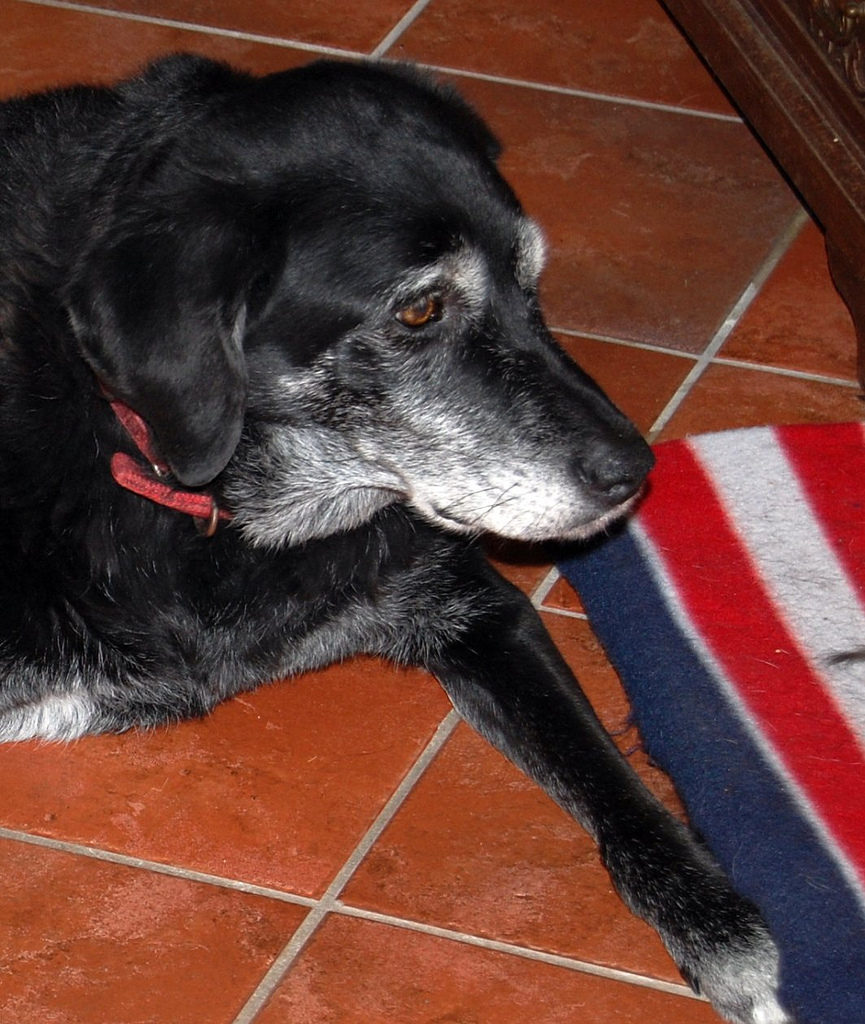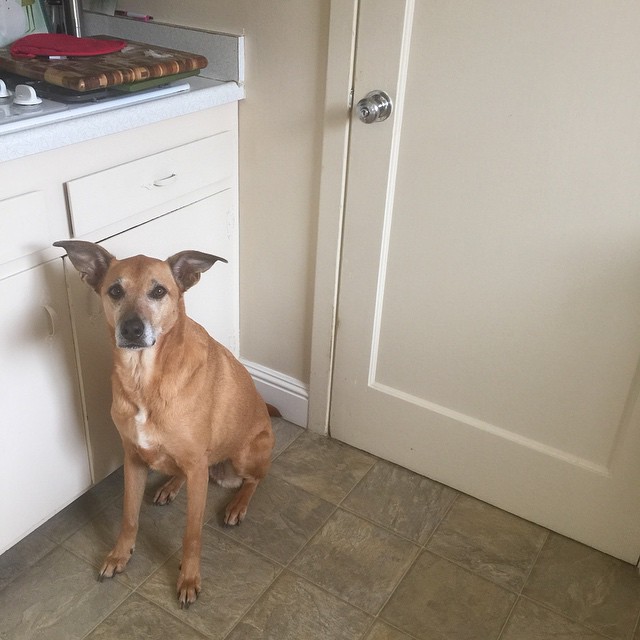
You may not realize it, but whining is one of the most versatile communications dogs have. Learning the different reasons dogs whine can help you understand your dog better and increase your bond. It can also help you with training, because if you are misreading your dog’s whining signals, you could be responding all wrong. Below are the top six reasons dogs whine.
#1 – Stress
Whining is one of the key signs of stress. A lot of reactive dogs will whine before they bark. Usually it is accompanied by pacing, cowering, lip licking, low tail carriage, panting, inability to respond to cues, etc. When training your dog, it’s good to notice this behavior – if your dog is whining, he is over his threshold in terms of stress and you may need to alter your training place/methods to bring him back down so he can actually learn.
 Image source: @AlanLevine via Flickr
Image source: @AlanLevine via Flickr
#2 – Appeasement
Does your dog whine when he greets new people and/or dogs? Appeasement is something the non-confident dog will do. Linked to stress, these dogs believe the new person or dog they are meeting may be a threat, and they will display appeasement behaviors including holding ears back, tucking the tail, crouching, rolling on their back, avoiding eye contact, turning the body sideways to the new person/dog, and/or whining. If your dog whines and displays one or more of these behaviors when greeting, seek the help of a professional trainer to teach your dog confidence and to overcome their fear of meeting new faces.
Keep in mind different breeds may have different needs as far as appeasement goes. See more: 8 Dog Breeds For Experienced Owners Only
 Image source: @AnneFittenGlenn via Flickr
Image source: @AnneFittenGlenn via Flickr
#3 – Excitement
One of the most easy to recognize “whines” is the excitement whine. We’ve all seen the lab that is so happy to see someone that their entire body wiggles and they start whining. It’s like they just can’t control themselves. And sometimes, they can’t. Often these are the dogs that jump, bark, and get “crazy” when they are doing something fun or exciting (greeting a new person, saying hi to dad when he gets home from work, or during agility class). You can help your pup by working on self-control and calming behaviors, such as mat training.
 Image source: @EricDanley via Flickr
Image source: @EricDanley via Flickr
#4 – Attention
Puppies are the biggest culprit of this one. Leave the room, and your puppy may immediately start whining because he wants you to come back and give him more attention. BE CAREFUL! Give in just once and your puppy will continue with this type of whining, and it may even turn into demand barking. Instead, ignore it and only give attention when your dog is quiet.
 Image source: @JamesBrook via Flickr
Image source: @JamesBrook via Flickr
#5 – Pain
Of course, a dog may whine when they are in pain. If you notice your dog whines when she gets up, goes up and down stairs, or puts weight on a leg, for example, it’s time to see a vet. An old dog may whine when she moves due to arthritis. Paying attention to this whine may save you money at the vet, as untreated injuries can be more costly to fix.
 Image source: @InAweofGod’sCreation via Flickr
Image source: @InAweofGod’sCreation via Flickr
#6 – Trained behavior
There are two types of “trained” whining behaviors – the good and the bad. The good is the pet parent that has trained their dog to whine at the door when he needs out to go potty. The bad is the dog, mentioned above, who has trained his owner to give him attention when he whines. Again, be careful what you teach your dog (or what you let him teach you!).
 Image source: @MicahBaldwin via Flickr
Image source: @MicahBaldwin via Flickr
The post 6 Reasons Your Dog May Be Whining appeared first on iHeartDogs.com.
Be the first to comment